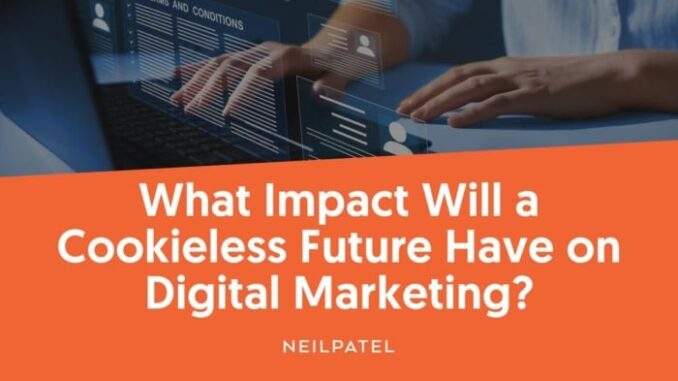
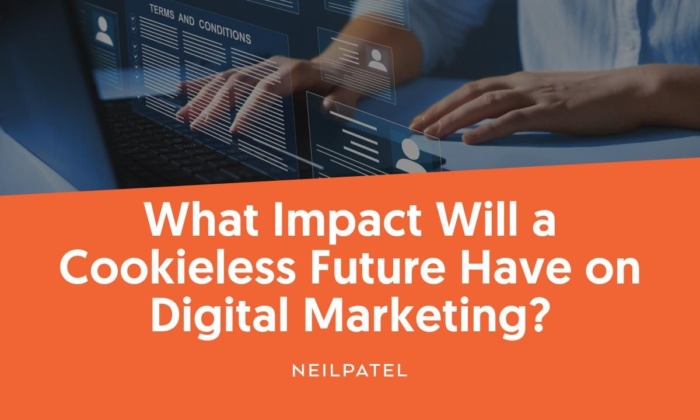
What’s the one thing you rely on for daily information updates? Your smartphone, maybe? Now, imagine a day when your go-to device suddenly loses connection, leaving you disconnected from your usual information stream. Unsettling, isn’t it?
Similarly, the world of digital marketing is confronting an analogous disquiet, due to the impending loss of a unique form of ‘information connection’ — the digital cookie. And unlike your smartphone, this one doesn’t just switch back on with a tap.
You may have heard talks about a ‘cookieless future’ and might be curious about how this transition could potentially redefine the landscape of digital marketing, much like the thought of adjusting to a day without your smartphone’s connectivity. You’re not alone in fearing the potential challenges of this change, and that’s exactly what we’ll dive into today.
The world of digital marketing is on the brink of a major revolution, thanks to many regulatory changes and growing concerns around privacy. Our trusty little digital allies — third-party cookies — are on their way out.
Now, I can almost hear you saying, “Neil, what’s the big deal? I’ve got first-party data. Isn’t that enough?” Well, yes, and no. The truth is the departure of third-party cookies is a bit more complex, creating ripples that will touch every nook and cranny of our digital marketing practices.
In this article, we’ll take a deep dive into this ‘cookieless future’ and how it will influence our strategies, campaigns, and conversions. Also, we’ll shed light on the new hero in town — ‘cookieless tracking’ — and how it could potentially become the main attraction of our post-cookie marketing world. Let’s get started.
What Are Cookies?
Let’s take a step back and kick off this exploration by understanding what cookies really are. No, not the ones that your grandma bakes! I’m talking about the ones that your web browser munches on.
In digital marketing lingo, a cookie is a tiny piece of data that a website stores on a user’s browser while they’re visiting. These little data morsels serve as a memory for the website, allowing it to recognize the user and remember things like their preferences, what’s in their shopping cart, or whether they’re logged in.
First-Party Cookies
First-party cookies are the “good guys” in our story. These are cookies created by the website you’re visiting. They play a significant role in enhancing user experience. They’re like the best kind of friend, always remembering your preferences, like your language setting, items added to a cart, or even the fact that you’ve logged in so that you don’t have to enter your password with every click.
Additionally, first-party cookies are considered quite respectful of user privacy. They’re generated and stored by the same domain you’re visiting and typically do not track your browsing activity across other sites.
Third-Party Cookies & Controversy
Third-party cookies, on the other hand, are more like the “gossipy neighbors” of the digital world. These cookies are created by domains other than the one you’re visiting, and they enable certain functionalities like ad targeting, cross-site tracking, and retargeting. Essentially, these cookies help marketers follow you around the web with relevant ads, reminding you of those sneakers you just glanced at or the vacation you were daydreaming about.
Here’s where things get a bit sticky. Third-party cookies have been controversial for a while now, primarily due to privacy concerns. There is a growing discomfort around the idea that our online behavior, preferences, and interests are being tracked, often without explicit consent.
As people have grown more conscious about the usage and sharing of their data from cookie tracking, apprehensions surrounding third-party cookies have come to the forefront. This has spurred legislative changes like GDPR and CCPA. Additionally, it has motivated tech giant Google, the custodian of the Chrome browser, to announce plans to phase out third-party cookies.
This potential shift towards a ‘cookieless future’ has stirred up quite the hornet’s nest in the digital marketing realm, and we’re all left wondering: what’s next? Let’s dive into that further.
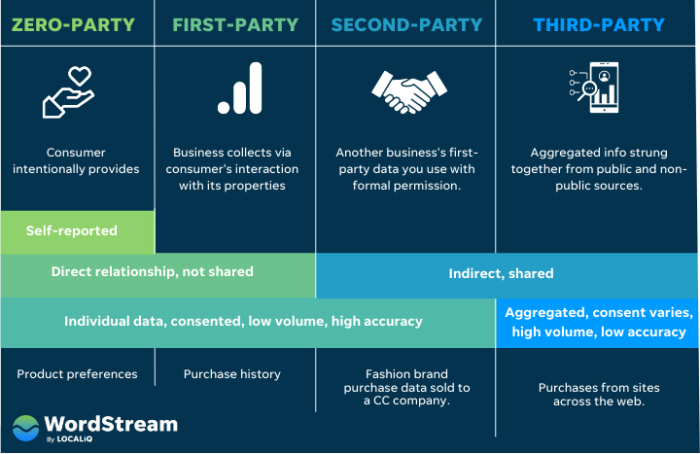
Source: Wordstream
What Does a “Cookieless Future” Mean?
The term “cookieless future” might sound like a diet plan, but trust me, it’s a topic that’s way more fascinating and holds immense significance for us digital marketers.
A cookieless future refers to an impending reality where third-party cookies are no longer part of our marketing toolkit. It’s a landscape where we would no longer have access to user data collected through third-party cookies, impacting how we perform user tracking, generate leads, retarget ads, and understand user behavior.
This is not to say that we’ll be left entirely in the dark. Instead, this shift challenges us to evolve and adapt our strategies to a more privacy-centric approach. It also opens doors for innovative alternatives to emerge — cue, ‘cookieless tracking.’
When We Can Expect the Cookieless Future
If you’re wondering when this cookieless era will dawn upon us, you’re asking the right question. The answer is – sooner than you might think.
Here’s a quick timeline of relevant events to help you visualize how things are unfolding:
Now, this transition isn’t going to be an on-off switch. It’s more like a sunrise, with gradual changes leading us into a new day in the digital marketing world. While we can’t exactly predict the full impact of these changes, we can surely prepare ourselves and our strategies for this imminent reality.
Setting Up Cookieless Tracking Strategies
As we navigate this cookieless sea, it’s time to hoist our sails and set the course for new marketing strategies. Rest assured, even without the ‘third-party cookie crutch,’ we still have several tools at our disposal that respect user privacy and deliver insights. Let’s explore some of these.
Improve Your First-Party Data Collection
First and foremost, it’s time to give first-party data the love it deserves. This data is directly collected from your users, and it’s completely compliant with privacy regulations. You can gather this data from touchpoints like website interactions, app usage, customer surveys, or even CRM. You can then use the first-party data to personalize ads and create a more impactful customer experience.
Consider implementing advanced analytics on your website to understand user behavior better, optimize your subscription forms to get more information directly from users, or improve your CRM processes. Personalizing your marketing is effective, but be sure users know what data you’re collecting and why — transparency is key.
Strengthen Your Contextual Advertising
Next, let’s talk about contextual advertising. This method doesn’t rely on user profiles or past behavior. Instead, it displays ads based on the page content the user is viewing. It’s like placing a billboard for hiking gear on a mountain trail — you’re reaching out to your audience right where their interests lie.
As we move towards a cookieless future, honing your contextual advertising strategies could prove beneficial. You can even use these skills to get results using paid social without cookies. Invest time in understanding your audience’s interests, the content they consume, and the places they frequent online.
Consider Alternate Identifiers
In the post-cookie era, alternate identifiers could become a significant part of our arsenal. These include hashed emails, mobile ad IDs, or even proprietary solutions like the Unified ID 2.0, a proposed solution by The Trade Desk. These identifiers rely on user consent, keeping in line with the spirit of a cookieless future.
- Hashed emails are a privacy-focused alternative where an individual’s email address is transformed into a unique string of characters. While retaining uniqueness, these characters don’t reveal the original email, thereby preserving the user’s privacy. The value of hashed emails lies in their ability to facilitate personalized marketing while adhering to privacy regulations.
- Mobile Ad IDs, like Apple’s Identifier for Advertisers (IDFA) or Google’s Advertising ID, are another option. These unique identifiers are assigned to each mobile device and can be used to track and personalize ads. However, user consent has become crucial with the advent of more stringent privacy controls, such as the App Tracking Transparency feature in iOS 14.
- Unified ID 2.0, a proposed solution by The Trade Desk, is an open-source digital framework that aims to improve consumer privacy while maintaining the effectiveness of personalized ads. Instead of relying on third-party cookies, it utilizes encrypted and hashed email addresses or other anonymized data that users willingly provide.
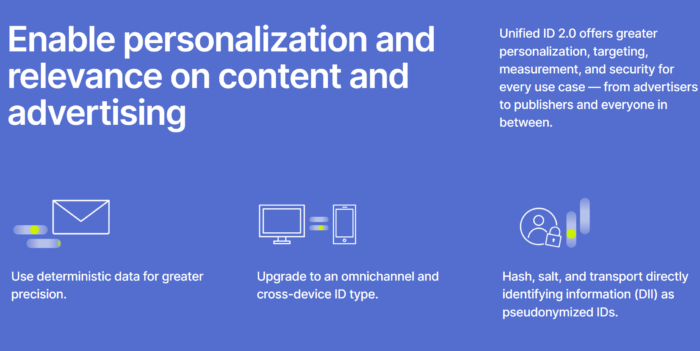
The common thread tying these alternate identifiers together is user consent. As we move towards a cookieless future, respecting user privacy by obtaining clear and informed consent for data collection and use will become the norm. This transition aligns with the core ethos of the cookieless era—promoting more transparent and privacy-centric digital experiences.
Establish Incrementality Testing
Incrementality testing is another strategy to lean on in a cookieless future. It’s about evaluating the incremental impact of your marketing campaigns — in simple terms, determining whether your ads are the real reason for the conversion or if the user would have converted anyway.
By regularly conducting incrementality tests, you can assess the actual value your campaigns bring and adjust them accordingly. Not only will this help improve your campaign efficiency, but it also reduces your dependency on third-party cookies.
Use Google Privacy Sandbox
Finally, let’s not forget Google’s Privacy Sandbox. Although the details are still being worked out, Google’s initiative aims to create a set of standards to protect user privacy while still delivering personalized ads. Features like FLoC (Federated Learning of Cohorts) aim to group users with similar interests, maintaining user anonymity while still allowing effective targeting.
The sandbox is still under construction, and it’s worth keeping a close eye on the developments. Remember, change always brings new opportunities. The trick is to stay informed, flexible, and ready to adapt. As digital marketers, that’s what we do best!
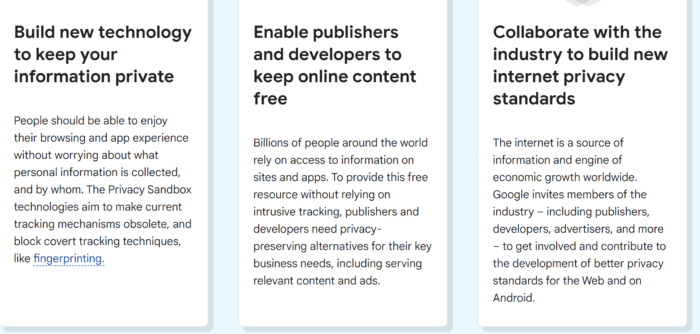
Source: Google
How a Cookieless Future Will Benefit Digital Marketing
The journey towards a cookieless future might be uncertain but remember — every cloud has a silver lining. There will be challenges, but there will also be several benefits.
A cookieless future encourages us to create more transparent, respectful customer relationships. It urges us to be better stewards of our data and prioritize privacy. In return, this fosters trust, loyalty, and stronger customer relationships.
It also opens doors for innovation in data collection, analysis, and ad targeting. We can expect the emergence of new, privacy-first technologies and tools that redefine how we understand and engage with our audiences.
FAQs
A cookieless future refers to a forthcoming digital landscape where third-party cookies are phased out. This change largely responds to growing privacy concerns and aims to create a more secure and transparent online environment.
The cookieless future will significantly alter how we track user behavior, target and retarget ads and generate leads. It encourages a shift towards privacy-first strategies, greater reliance on first-party data, and utilization of alternative user identifiers.
Preparing for a cookieless future involves a multi-pronged approach. Some key strategies include improving your first-party data collection, strengthening contextual advertising, considering alternate identifiers, conducting regular incrementality testing, and keeping an eye on developments like Google’s Privacy Sandbox.
Third-party cookies are being phased out primarily due to concerns over user privacy and data security. Legislative changes like the GDPR and CCPA and initiatives from tech companies like Google reflect a growing commitment to prioritize user privacy and consent in data collection practices.
In a cookieless future, advertising strategies must adapt to rely less on third-party data for targeting and retargeting ads. Advertisers must lean more on first-party data, contextual advertising, and alternative identifiers that respect user privacy. However, personalized advertising will still be possible, just executed more privacy-consciously.
As of now, there are no plans to phase out first-party cookies. These cookies are generally seen as less invasive, as they only track user behavior on the site they’re generated from, and they play an important role in improving user experience on websites.
Google’s Privacy Sandbox is an initiative aimed at developing a set of open standards to enhance privacy on the web. Features like FLoC (Federated Learning of Cohorts) are part of this initiative, designed to group users with similar interests while maintaining user anonymity. The goal is to create an environment where personalized ads and user privacy coexist.
Conclusion
As we brace ourselves for a future without cookies, it’s crucial to remember that the essence of digital marketing remains the same — delivering the right message to the right person at the right time. The tools are changing, but the goals and principles that guide us remain untouched.
This upcoming transition isn’t just a challenge — it’s an opportunity. An opportunity to build stronger, more transparent relationships with our customers. A chance to innovate and find new, privacy-first ways to connect with our audience. And most importantly, an opportunity to take digital marketing into an era where user trust and privacy take center stage.
If the cookieless future arrives tomorrow, how prepared are you to embrace it?

Leave a Reply